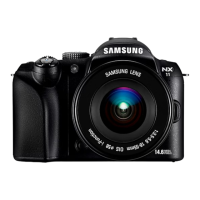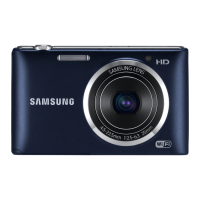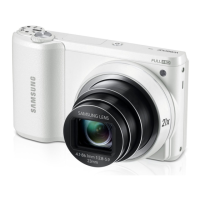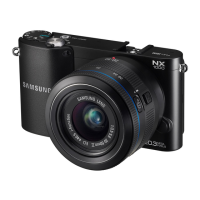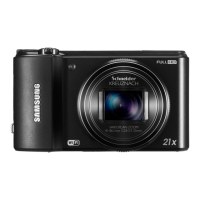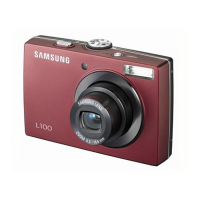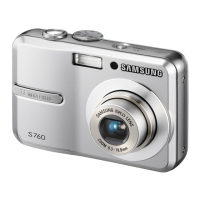How to fix a Samsung CL80 that will not turn on?
- JJustin HartJul 29, 2025
If your Samsung Digital Camera won't turn on, make sure that the battery is inserted correctly and that the battery is charged.




How to fix a Samsung CL80 that will not turn on?
If your Samsung Digital Camera won't turn on, make sure that the battery is inserted correctly and that the battery is charged.
What to do if my Samsung Digital Camera cannot take photos?
If your Samsung Digital Camera won't take photos, ensure the camera is switched on, the battery is correctly inserted and charged. There may be no space on the memory card. Try deleting unnecessary files or inserting a new card. The memory card may be defective, so try replacing it.
Why is my Samsung CL80 losing battery power quickly?
If your Samsung Digital Camera is losing battery power quickly, it could be due to low temperatures; keep the battery warm. Using the flash or recording videos also depletes the battery quickly, so recharge as needed. Note that batteries are consumable parts that must be replaced over time, so get a new battery if the battery life is diminishing quickly.
Why does my Samsung CL80 Digital Camera power turn off suddenly?
If your Samsung Digital Camera's power turns off suddenly, try charging the battery. The camera may be in Power save mode or the camera may turn off to prevent the memory card from being damaged due to an impact. Turn on your camera again.
What to do if the touch screen or buttons do not work on Samsung CL80?
If the touch screen or buttons on your Samsung Digital Camera do not work, remove the battery and insert it again.
Why does the flash fire unexpectedly on my Samsung CL80?
The flash may fire on your Samsung Digital Camera due to static electricity. This is not a malfunction of the camera.
What to do if my Samsung Digital Camera freezes?
If your Samsung Digital Camera freezes, remove the battery and insert it again.
Covers eye safety, battery handling, and pacemaker interference precautions.
Guidelines for careful handling, avoiding environmental damage, and proper storage.
Rules for using the camera near medical equipment, aircraft, and electronics.
Procedures for camera service and ensuring battery longevity.
Advice for using the camera in humid environments.
Checking the box contents and identifying camera parts.
Charging, turning on the camera, and initial configuration.
Explains screen icons and how to use the touch screen interface.
How to choose and switch between different shooting modes for various scenarios.
Adjusting touch screen display preferences and sound settings.
Detailed guide to various shooting modes and their specific uses.
Features like Beauty Shot, Frame Guide, and Night mode adjustments.
Step-by-step instructions for recording videos and voice memos.
Utilizing Smart Scene Detection and other intelligent camera modes.
Setting photo resolution and image compression quality for storage and print.
How to utilize the camera timer for delayed photo capture.
Practical tips for taking clear photos at night or in dim environments.
Adjusting focus modes like Macro, Auto, and Touch focus for sharp images.
Using face detection, smile shot, and face recognition for better portraits.
Manual exposure control, white balance, and metering settings for image quality.
Using continuous shooting and improving photos with styles/filters.
Navigating, scrolling, and viewing media files on the camera.
Playing videos and voice memos, including basic editing like trimming.
Rotating, resizing, applying styles, and filters to photos for enhancement.
Connecting the camera to TVs and HDTVs for media playback.
Methods for transferring photos and videos to PC or Mac computers.
Printing photos directly from the camera using PictBridge compatible printers.
Connecting to Wi-Fi networks and troubleshooting common connection issues.
Saving personal info, email addresses, and setting camera passwords.
Accessing sharing websites and sending photos via email.
Viewing media on DLNA devices and transferring between cameras.
Sending photos wirelessly to mobile phones and PDAs.
Accessing and adjusting various camera system settings.
Identifying and resolving common camera error messages.
Instructions for cleaning the camera, lens, and screen.
Details on compatible memory cards and battery specifications.
Troubleshooting steps to perform before contacting customer support.
Detailed hardware and software specifications of the camera.
FCC notice, safety warnings, and eco-mark details.
| Type | Compact |
|---|---|
| Sensor Type | CCD |
| Megapixels | 14.2 |
| Effective Pixels | 14.2 |
| Optical Zoom | 5x |
| Digital Zoom | 5x |
| LCD Monitor Resolution | 230, 000 dots |
| Video Resolution | 1280 x 720 |
| Image Stabilization | Optical |
| ISO Range | 80 - 3200 |
| Storage Media | SD/SDHC |
| Image Sensor | 1/2.33" |
| LCD Screen Size | 3.7 in |
| Screen Size | 3.7 in |

